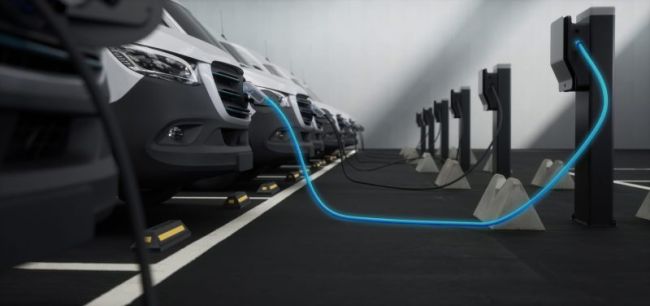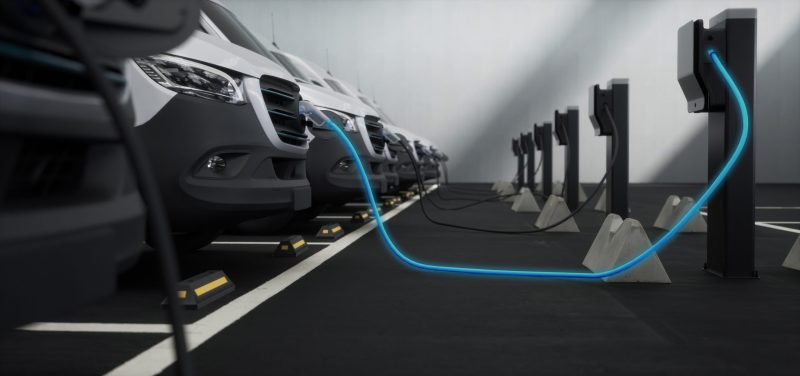
The New ‘Fuel’: Strategies for Tracking and Managing EV Charging Costs
With electric vehicles, utility rates are the new fuel prices and will require similar monitoring.
As more utility fleets add electric vehicles to their mix, fleet managers need to understand the intricacies of managing EV charging costs, much like they would fuel expenses.
Fleets are adopting an emerging array of strategies, tools and practices to monitor and control these costs. After all, utility rates are the new fuel prices and will require similar monitoring to ensure cost-effective charging.
However, the most critical cost control strategy starts before the first EV enters the fleet garage.
Electrifying a fleet requires planning to ensure the necessary charging infrastructure is in place before vehicles begin to arrive and can support future EV additions. With lead times for some EVs extending for many months, the charging depots can be developed as you wait for vehicles to be delivered.
“You not only have to plan for the EVs you have today but also what your charging needs will look like in the next five to 10 years and make sure you have the correct infrastructure built ahead of time to accommodate future needs,” said Nate Lyall, manager of EV technology for fleet management service provider Holman (www.holman.com).

Southern California Edison is planning ahead for the growth of its EV fleet. The utility is taking deliveries of Ford F-150 Lightning pickups and has added a Class 8 EV truck to its fleet. More than 400 EV charge ports are in place, and the infrastructure for 200 more has already been installed. Through 2028, SCE plans to add 2,000 chargers at 100 locations to support its goal of electrifying all of its light-duty vehicles, 30% of its medium-duty trucks and 8% of its heavy-duty trucks by 2030.

A Charging Depot Alternative
There is an alternative to building charging depots: plugging into charging-as-a-service solutions. A third party deploys and manages the infrastructure, and customers pay based on usage. A fleet could utilize a mix of owned and third-party charging as the fleet scales; this could help support vehicles that may operate in remote areas.
However, most fleets are investing in charging depots to support their electrification programs. Keep in mind that depots are only one of three possible charging sources, each with its own pros and cons. Charging depots service EVs that return to the yard every day. Also, public charging infrastructure is available, with higher rates and service fees from various providers.
Home charging is the new wrinkle, with drivers taking EVs home overnight. But not all employees’ homes will be suitable, such as apartment dwellers who can’t add a charger. Companies are figuring out how best to reimburse employees for charging EVs at home.
Given the higher public charging costs, Lyall recommended fleets rely on their depots or home charging.
“We recommend public charging should only be used in an unusual situation where the EV will exhaust its battery before it can return to the depot or home charger,” he said.

Tracking Data
Overall, EV fleet performance indicators are similar to their gas or diesel counterparts, with a few exceptions. Recharging costs replace fuel consumption, while maintenance and repair costs are still a fact of life. Safety and compliance remain a high priority, and advanced vehicle telematics give managers more insight into vehicle and driver behavior. Asset utilization remains a crucial indicator to ensure the fleet operates efficiently.
The ability to track these factors with the new EVs is still evolving. Like other emerging technologies, different elements of the EV ecosystem don’t share information well. It’s difficult to capture data from electric vehicles, chargers, maintenance systems and the combustion engine fleet for centralized decision-making. Companies like Holman offer dashboards that integrate these various data streams.
“Bringing the data into one system is just the first step. Managing it effectively and leveraging it to change behavior or making adjustments based on the data is another challenge,” Lyall said.
He recommended pulling data from the EVs and smart chargers for a comprehensive picture of battery health, driving habits and vehicle performance. The data will help answer questions, such as whether the battery degrades faster on a fast or slow charge, if a driver always charges to 100%, and if they drain the battery to zero. Fleet managers get accurate insights into the actual battery range as compared to the published estimates and can also measure variables such as the impact of a payload on the range.
New Habits Needed
When EVs arrive in a fleet, drivers must develop new habits. Unlike a fossil fuel vehicle that costs the same to refuel at any time of day, charging rates for EVs often vary due to peak rates. Smart chargers can help monitor and control when EVs are connected to the grid to take advantage of off-peak rates.
Telematics can help reveal the work profile of each vehicle to optimize load management. Managers will be able to see how many miles a vehicle operates each day, when it leaves and returns, and the battery performance. If a vehicle uses a fast charger but sits for a shift after charging, the cost per charge will likely be higher than it should be. Swapping to a slow charger may cut charging expenses.
As utility fleets add EVs, Holman is developing data on operating and maintenance costs compared to combustion engine vehicles. There are some tradeoffs. Overall maintenance is lower for EVs because there’s little scheduled preventive maintenance. However, tire replacement costs tend to be higher due to the heavier curb weight of EVs.
About the Author: Gary L. Wollenhaupt is a Phoenix-based freelance writer who covers the transportation, energy and technology sectors for a variety of publications and companies.
Photo courtesy of Holman
- Addressing the Elephant in the Room: Are Your Electrification Targets Realistic?
- Addressing Ergonomics in Utility Fleet Vehicles
- The Fleet Leader’s Guide to Effective Communication: Inspired by ‘Made to Stick’
- Armor Your Connected Fleet with Cybersecurity Measures
- Get Up to Speed on Fleet Advancements at North America’s Largest Work Truck Event
- The New ‘Fuel’: Strategies for Tracking and Managing EV Charging Costs
- What to Consider When Coordinating OEM Training Opportunities for Your Shop Technicians
- What’s New in Truck and Van Upfits for 2024?
- Fleet Electrification Plans Face Reality Check Amid EV Slowdown


